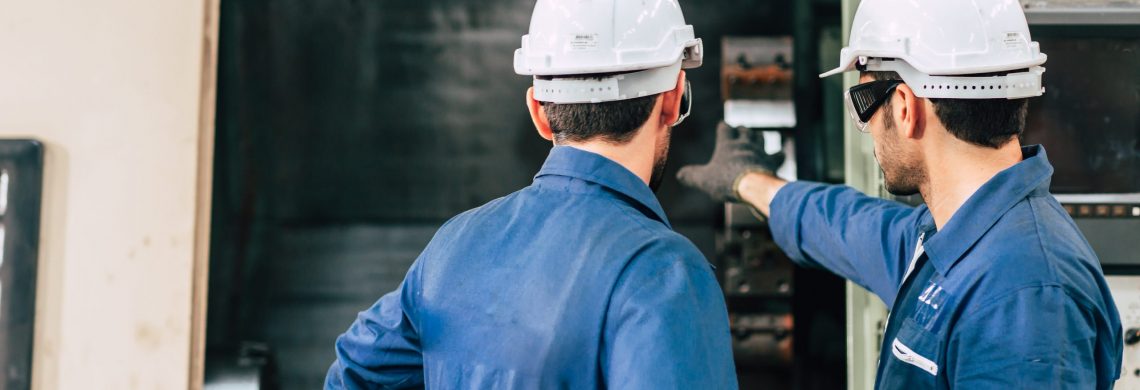The protection triangle
4 june 2021

For Leszek Golachowski, Riskonet partner in Poland, there is a lot more to realising and sustaining optimum fire protection than just throwing money at the system. A recent fire suffered by a client in Poland inspired him to explain why.
When it comes to fire protection, there are three corners of what I see as the “protection triangle”. Firstly there is the protection system itself, such as a sprinkler installation. Secondly, is the occupancy, what a building is used for. And thirdly is the maintenance, ensuring that everything stays fit-for-purpose and ready to respond. Each of these three corners of the triangle are vitally important and must be taken into account. There is much more to fire-protection safety than just installing an effective system.
Use-appropriate
In my experience, all-too-often people lose the correct perspective and place the focus solely, or too emphatically, on just the first corner: the installed protection system. But occupancy, the second corner is also crucial. Installing a sprinkler system that is state-of-the-art and compliant is not enough; it must be appropriate to the use of the building, such as what might be stored in it, and how. Even with a very flexible sprinkler system, you need to be sure that what you store in a building, as well as how you store it, doesn’t exceed the bounds of that flexibility. I’d even go so far as to say that it would be a waste of money to install an expensive system in a building that isn’t suited to the occupancy.
Catastrophic consequences
The potentially catastrophic consequences of underestimating the importance of occupancy was illustrated in Poland recently when part of a client’s building burned down. It’s actually what inspired me to write this blog. We flagged up an issue with this building the first time we visited it in the spring of 2016. Back then, the owner paid some attention to our specific concern, but it was later dropped as an “occupancy” issue. Because they considered it easy to rectify, it was deemed to be of lesser importance and, over time, insufficient attention was paid to it.
Poor fit
Now that wasn’t a badly maintained or badly protected building. And what was being stored wasn’t exactly hand-grenades or gasoline; it was just a low-hazard product. Normally speaking, the installed sprinkler system should have been able to quickly cope with such a fire. But once the material ignited it didn’t burn fiercely, it smouldered, for a long time. The fire was very difficult to put down and took about a week to extinguish. The client faced a week’s interruption and millions in damage, all because the occupancy was a poor fit with the installed system.
Keep it fit-for-purpose
This particular example was a sprinkler system, but it applies to other systems too. A fire-hose system installed in a sorting facility, for example, would be rendered much less effective if the occupancy was altered through the installation of a new conveyer belt. If the new belt restricts the coverage of the system, what was originally fit-for-purpose would no longer be so because the nature of the occupancy would have changed.
“There is much more to fire-protection safety than just installing an effective system”
Leszek Golachowski, Partner
Maintenance
That brings me to the third corner of the triangle, maintenance. This too is a crucial element. It doesn’t matter how well a system is designed, or how well suited it is to the occupancy, if it is not properly maintained it is not going to respond and work optimally. NFPA research has demonstrated that most failures are attributable to poor maintenance: like a valve being closed, for example, or perhaps nobody noticing that a pump wasn’t in automatic mode.
Intrinsically connected
When a building is commercialised and prepared for its tenants, care is initially invested in the protection triangle, but unfortunately that care erodes over time. In addition to keeping system equipment in working order, maintenance must also continuously take occupancy into account. They are intrinsically connected but all-to-often this connection is neglected, either because the building's operator is insufficiently aware of the user’s occupancy or through a lack of communication between the two. Over time, tenants change, as does the nature of a building’s occupancy, but this change is not taken sufficiently into account. Insurers might inspect the situation every few years but this is not nearly frequently enough, because a fire is something that can happen every day.
Two options
To provide some perspective, a poorly designed or delivered system is a tangible situation that can easily be remedied. But if there is a complete or partial mismatch between the installed system and the nature of some of a building’s occupancy, a fix is more difficult to find. Difficult but not impossible. Basically, you have two options. You can adapt the occupancy, particularly storage, to a greater or lesser extent to fit the flexibility of the system. Alternatively, if the occupancy really doesn’t fit, you can change the system. At the moment too much attention is paid to hardware, not enough to occupancy, while maintenance is largely ignored.
Sufficient focus
When it comes to that maintenance, you must ensure that sufficient focus is placed on it actually being done. And being done correctly. If your lighting fails, you’re in the dark. If your climate control fails, it gets too warm. But you only find out if the maintenance on your fire-protection system is not good enough if, and when, you need it. If maintenance is substandard, you don’t get a second chance and the repercussions can range from very inconvenient to catastrophic.






